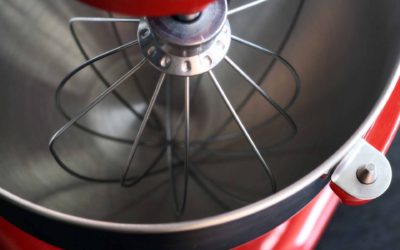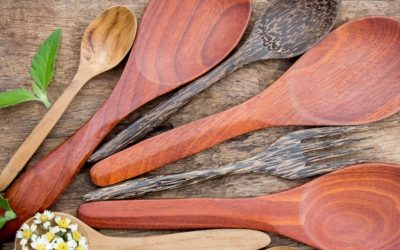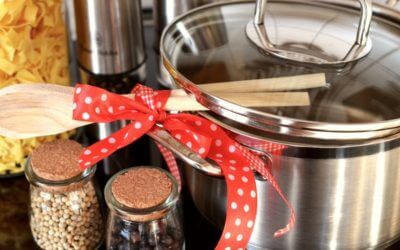Tips for Managing Restaurant Inventory
October 10, 2018Does the thought of keeping track of every ingredient and piece of kitchen equipment in your restaurant make you want to hide your head under a pillow?
You’re not alone. Keeping track of everything is time-consuming and often overwhelming. And you know how much your staff loves performing inventory!
At the same time, though, managing your inventory is vital to keeping costs under control, catching issues before they become major, and ensuring the success of your restaurant.
Here are some ways you can make inventory management easier!
Expand Your Definition of Inventory
Many restaurants track food levels very carefully, but neglect areas like kitchen equipment, supplies, and even customer ordering patterns.
The truth is, you can track all of these items in your Little Rock restaurant. Much of it is done seamlessly behind the scenes when you have the right software in place, but some has to be done by hand.
Tracking your supplies and the state of your kitchen equipment can help you make replacements before something breaks entirely. Just like you want to trade in your car before it completely dies, and you want to replace your stove, refrigerator, or other appliance before they quit in the middle of a rush!
Tracking your customers’ attendance and ordering patterns can help you understand your restaurant better. You can spot seasonal trends, stock up on popular items, and cut menu items no one orders.
Take Advantage of Technology
Technology can help you avoid human error, save time, and focus your employees on more valuable tasks. A good point of sale (POS) system can help you track what’s sold and when your customers arrive and leave.
Inventory systems allow you to input how much you have, then subtract how much you sell to give you a remaining amount. When you also enter your orders, you’ll have a pretty good idea where your inventory stands every day.
Of course, you’ll still have to do a physical count to make sure that actual inventory matches the projection. But you don’t have to do it as often.
Keep Kitchen Equipment Clean and Organized
From your day-to-day kitchen equipment to your ingredients, everything is easier to track if it’s organized and clean.
The best way to keep things in place is to create an “everything in its place” system. When the employees’ work tasks create habits to reinforce the system, you can have your inventory clean and organized on a daily basis.
On those occasions when you DO need to do a physical hand-count, it will be much easier and quicker to accomplish when everything is in its place.
Of course, many shifts are busy and chaotic, but a system of setting everything back where it goes at the end of each shift can make it simple to not only do inventory but to run the next shift quickly and effectively.
Get the Equipment You Need Today
We’ve been serving the restaurants of Little Rock for many years, and we’d love to help you get the kitchen equipment you need as well.
Managing your inventory is about more than food and menu items. Make sure your supplies are topped off and your appliances are in top shape too.
Let us help you find what you need. Contact us today!
5 Essential Buying Tips for Your Next Food Prep Work Table
The right foodservice equipment is pivotal to the efficiency of your kitchen. One of the most important types of foodservice equipment for any kitchen is the work table. With limited room on countertops available for your food prep needs, the cooking process can drag...
Tips for Keeping Your Commercial Sink Sparkling Clean
Your commercial kitchen, just like your personal kitchen, must be kept clean at all times. With all of the cooking and food processing you do, it is inevitable that your sink gets messy. Cleaning up your commercial kitchen is incomplete without proper cleaning of your...
Food-Cutting Secrets to Beautiful Dishes
In the restaurant industry, presentation is often said to be just as important as the food itself. Using the right knowledge, skills and restaurant supplies, you can incorporate creativity into your presentation, making guests feel that they are getting something...
Top Space-Saving Tips for Commercial Kitchens
Top Space-Saving Tips for Commercial Kitchens Space is always an important consideration when setting up a kitchen, and this is even truer for commercial kitchens. With a strong focus on functionality and the kitchen supplies that meet the needs of your commercial...
5 Ways to Get the Most Out of Your Mixer
No one wants to eat off of dirty or tarnished silverware. A stand mixer is a highly useful piece of kitchen equipment to invest in. Although this type of kitchen equipment does not usually come cheap, it can last a lifetime when properly cared for. Despite all your...
Restaurant Prep Tool Selection Simplified
What’s a restaurant kitchen without high-quality prep tools that can withstand the pressure of frequent use? Whether you already have a restaurant you’re running, or you’re just planning to launch one, one vital factor that could make or mar your business is how you...
Beginner’s Guide to Choosing a Commercial Ice Cream Freezer
Ice cream is a delicious and appealing desert treat for everyone, young or old. Having made the decision to sell ice cream to your customers, whether you have a restaurant, convenience store, or specialty ice cream parlor, it is time to begin stocking up on the right...
How to Choose the Right Kitchen Scales for Your Restaurant
A food scale is an essential item in every restaurant’s store of kitchen supplies. Designed to take the guesswork out of food measurement and maintain consistent food serving sizes, food scales are indispensable kitchen supplies in the commercial kitchen. With such a...
Beer Chilling Systems: Which Type Is Right for My Restaurant?
A refrigeration unit is integral to the functioning of any restaurant. Beers are best served cold - there’s no questioning that! But which beer chilling system is the best? From reach-in coolers to glycol chillers, a beer chilling system is an important piece of...
What Equipment Will I Need to run a Food Truck?
There’s a lot of planning that goes into starting your own food truck business. Before you hit the road with your delicious food offerings, you’ll need to fill up your truck with all the right foodservice equipment. Considering the lengthy list of possible items to be...
8 Types of Food Thermometers: What You Need To Know
Food thermometers are essential restaurant supplies for your commercial kitchen. They ensure that foods prepared in your commercial kitchen are cooked to the right temperature and held at that temperature for as long as necessary to kill any harmful bacteria. This...
How to Identify the Best Food Processor for Your Needs
Highly versatile and extremely efficient, food processors are designed to take away the hard work from repetitive kitchen activities. This type of cooking equipment can quickly become an invaluable tool in your kitchen. From chopping, to shredding, grinding, mincing,...
6 Keys to Choosing the Best Chafing Dishes for Your Restaurant
The chafing dish, also known as the chafer, is an essential piece of restaurant equipment for any establishment that wants to keep food hot. This type of restaurant equipment gets its name from the French word, chauffer, which means to heat, and it’s easy to see why....
Turning up the Dial on Commercial Fryers: How to Choose One for Your Restaurant
Fried food is a well-loved favorite. This is a fact. It also makes a fryer an important piece of equipment to have in your commercial kitchen. Just consider how many appetizers and sides require frying: onion rings, French fries, and fried green tomatoes are just a...
What’s in a Cooking Pot, How to Choose the Right One?
As a restaurant owner, your cooking needs might vary. Did you know that a good quality pot can greatly improve your cooking experience, while also improving the quality of your cooking? This cooking equipment is a very important one that cannot be done away with...















